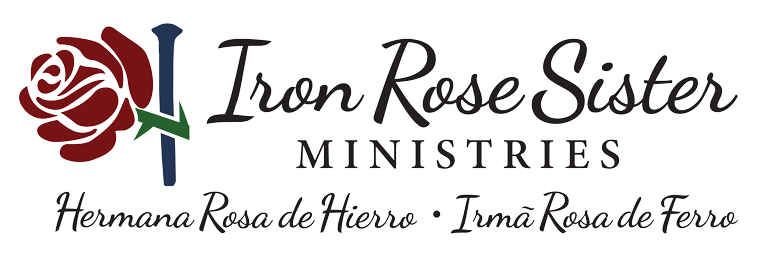We love building relationships. Subscribe to our blog to receive weekly encouragement in your email inbox.
Search Our Blog Posts
Blog Article Tags
Visit Our Store
Donate
You can also mail checks, made out to IRSM, to:
Iron Rose Sister Ministries
PO Box 1351
Searcy, AR 72145
IRSM is a 501(c)(3), so donations are tax-deductible.
Blog
More blog entries below
 Written by Ayane Nayara, Brazil Assistant for Iron Rose Sister Ministries
Written by Ayane Nayara, Brazil Assistant for Iron Rose Sister Ministries
When something comes into existence, it goes through several processes. A seed, when planted in the ground and watered, goes through several stages until it becomes a plant that bears fruit. It absorbs water, activates its embryo, and then begins the process of growth and development. It takes days, months, and years. And even when it grows and seems to be at its limit, it continues to grow and transform. With each season, it goes through changes and cycles until the end of its life.
The Christian journey follows the same path… We are born in Christ, and then we enter a process of growth and transformation. It is spiritual, but it goes beyond that. It is a new lifestyle.
And we all, who with unveiled faces contemplate the Lord’s glory, are being transformed into his image with ever-increasing glory, which comes from the Lord, who is the Spirit. (2Co 3:18 NIV)
In chapter three of 2 Corinthians, Paul speaks about the moment when Moses went up the mountain to speak with God, and when he returned, his face shone so brightly that the Israelites could not look at him. Moses was in the presence of God. He was His representative, so his face reflected His glory, like a mirror.
Paul then makes an analogy to our lives today, but in a much more hopeful and free way. Through Christ, we can behold the glory of God and reflect His image in us. We do not need to cover our faces because the reflection of Christ that He transmits needs to be seen by the world with freedom through the Spirit and grace.
But this requires growth and transformation from us. It is Christ who needs to be seen, not us. And this transformation begins when we start to live with the Lord and spend time with Him. Looking at God transforms us. If we look at Him and contemplate Him as Moses did, we can reflect Him in our lives.
For us to be close to God in this way, reconciliation is necessary. We cannot represent or reflect the image of someone we do not know or have a relationship with. “We are therefore Christ’s ambassadors, as though God were making his appeal through us. We implore you on Christ’s behalf: Be reconciled to God” (2Co 5:20).
If we continue reading the following chapters of 2 Corinthians, Paul mentions something that can hinder our process.
Do not be yoked together with unbelievers. For what do righteousness and wickedness have in common? Or what fellowship can light have with darkness? What harmony is there between Christ and Belial? Or what does a believer have in common with an unbeliever? What agreement is there between the temple of God and idols? For we are the temple of the living God. As God has said: “‘I will live with them and walk among them, and I will be their God, and they will be my people.” (2Co 6:14-16)
What can hinder us the most is our attempt to maintain the same lifestyle as those who have no relationship with God while we try to reflect God. It’s contradictory. I am not saying that from the moment you reconcile with God, you will no longer have any relationship with those who are not connected to Him. On the contrary, we need to reflect Christ to these people. However, we need to adopt a new lifestyle in communion with others who have the same goal— to be transformed by Christ.
For this, we have the Holy Spirit who guides us and transforms us from the inside out. And we have His church, full of men and women who are in the same process, being shaped by Him and sharpening one another.
And I have news for you: this process is not a one-time occurrence. It is ongoing! It is a daily journey of growth, in which we fight against sin and the things that want to separate us from God. The transformation will require perseverance from us. On this journey we will be pressured, we will be perplexed, we will be persecuted, but the Almighty God, whose ambassadors we are in this world, is with us. “We are hard pressed on every side, but not crushed; perplexed, but not in despair; persecuted, but not abandoned; struck down, but not destroyed” (2Co 4:8-9).
For God, who said, “Let light shine out of darkness,” made his light shine in our hearts to give us the light of the knowledge of God’s glory displayed in the face of Christ. (2Cor 4:6)
With this, I encourage you to seek more and more each day the transformation that only God can carry out in us.
 Written by Amy Mathis, Iron Rose Sister Ministries Volunteer In New Mexico
Written by Amy Mathis, Iron Rose Sister Ministries Volunteer In New Mexico
Do not be conformed to this world, but be transformed by the renewal of your mind, that by testing you may discern what is the will of God, what is good and acceptable and perfect. (Ro 12:2 ESV)
I guess you could say I have had two transformations. The first one happened in March 2024, when I was “re-baptized” [story/explanation in a previous blog post]. After that, I thought I was doing well. I went beyond my comfort zone. I became more involved at church by organizing and leading two ladies’ Bible studies and speaking twice at both the fall and spring "Higher Ground" retreats. I even stepped up in more of a leadership role at work.
All that changed in June of 2024. At that time, I had a mental health break due to issues within my family. I attempted twice to get inpatient treatment at my local hospital, but due to factors beyond my control, I was unsuccessful. After that I chose outpatient treatment and found that God’s Word was true.
Therefore, confess your sins to one another and pray for one another that you may be healed. The prayer of a righteous person has great powers as it is working. (Jas 5:16, ESV)
Thankfully, after seeing some providers that didn't fit, I was able to find a Christian therapist and started a therapy called EMDR [Eye Movement Desensitization and Reprocessing]. Since August of 2024, I have made progress, but I am still working toward my goals.
And we all, with unveiled face, beholding the glory of the Lord, are being transformed into the same image from one degree of glory to another. For this comes from the Lord who is the Spirit. (2Co 3:18)
Because of this progress, I am finding the courage to finally get my driver's license when we move to Texas! I can now think of memories about my mother, without dwelling on the bad memories and, instead, remember the good times we had. I am reminding myself of the truth that my miscarriage was not my fault, as I had been thinking before.
So, I guess you can say that I am working on my second transformation and with my Lord and Savior's help, I can add to my imperfect testimony in Christ!
I have been crucified with Christ. It is no longer I who live, but Christ who lives in me. And the life I now live in the flesh I live by faith in the Son of God, who loved me and gave himself for me. (Gal 2:20)
From Michelle J. Goff: Amy, thank you for bravely sharing your ongoing testimony of transformation! Thank you for sharing the truths In Scripture that have been significant for you in this process. And thank you for letting Christ be the author of your transformation.
Dearest reader of our blog: If you struggle with some of the similar lies and challenging issues within your family, I want to recommend one of our most popular books recently: Who Has the Last Word? Cutting through Satan's Lies with the Truth of God's Word. You will be guided to recognize the lie, replace the lie with truth, and remember the truth through a specific Bible verse. Let's join together In our Imperfect testimonies of transformation in Christ.

